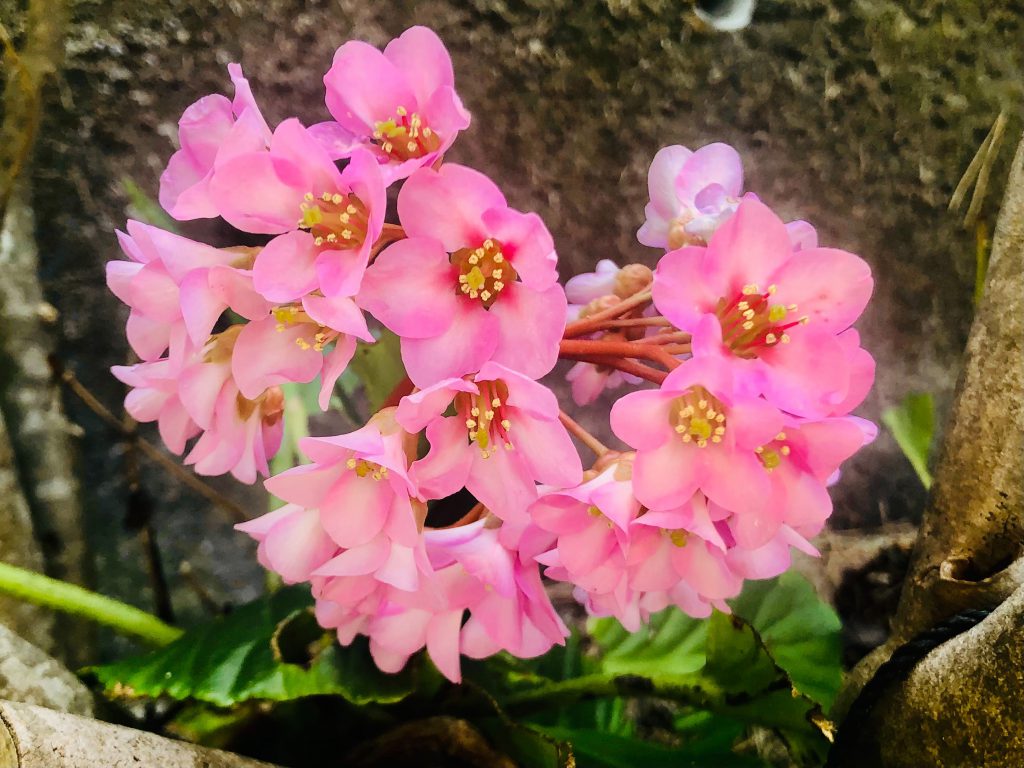
Himalayan Yukinoshita grows naturally in the Himalayan region, and from the end of winter to spring, white to pink five-petaled flowers are attached to the tip of the flower stalk that extends long from the side of the large, lustrous oval leaves that spread out like crawling on the ground. It blooms in clusters. It came from the Himalayas far away in the early Meiji era, can withstand the heat of midsummer, regardless of soil, and has the strength to adapt to any environment. Also known as shortia uniflora, it grows on rocky areas and is named because its leaves are larger than those of shortia uniflora, which resembles a fan. The flower language is “patience” and “hidden emotion”, and it is probably derived from the fact that the leaves do not die even under cold snow and bloom in early spring. Although it is an alpine plant, it also has the flower word “adaptation” because it adapts well to the climate of Japan and blooms.
ヒマラヤユキノシタは、ヒマラヤ地方に自生し、冬の終わりから春にかけて、地を這うように広げた楕円形の大きくつややかな葉のわきから長く伸びた花茎の先に、白からピンクの五弁花がかたまって咲きます。明治初期に遠くヒマラヤから渡来して、土を選ばず、真夏の暑さにも耐え、どんな環境にも合わせられる強さを持っています。別名オオイワウチワとも呼び、岩場に生え、葉を団扇に見立てたイワウチワより葉が大きいことから付けられました。花言葉は「忍耐」「秘めた感情」で、冷たい雪の下でも葉が枯れることなく、早春に花を咲かせることからつけられたのでしょう。高山植物ですが、日本の気候に良く順応して花を咲かせることから「順応」という花言葉もあります。
